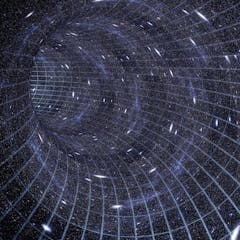
Articles on Curious Kids
Displaying 301 - 320 of 675 articles

You might think the more oxygen you breathe in the better. But too much oxygen can make you sick.

Philosopher Nick Bostrom’s theory suggests there’s a one-in-three probability we live in a simulation.

Our cells may be small, but they are mighty. And they are made of lots of amazing stuff, from the DNA that tells your body how to grow, to mini skeletons that let cells move around.

Before pilot Charles Taylor and company mysteriously vanished in the Bermuda Triangle in 1945, Taylor had to be rescued from the Pacific Ocean twice.

There is a reason why it’s easier to roll marbles down rather than up a hill. And the answer (to this and to gravity itself) is all about acceleration.

A single colony of bees can have 60,000 bees in it. Together, they can visit up to 50 million flowers each day to collect pollen and nectar. They’re not called ‘busy bees’ for nothing!

They might not really fly on broomsticks or cast spells, but the witches and wizards of books and films are based on real people.

Some rainstorms drench you in a second, while others drop rain in a nice peaceful drizzle. A meteorologist explains how rainstorms can be so different.

The oldest known skeleton of our species Homo sapiens is about 300,000 years old. But there was a time when humans didn’t exist at all and the world was covered in nothing but slime.

A light invisible to humans makes chemicals in our skin very excited. In fact, the chemicals become so excited they change shape and become vitamin D.

It’s a lot more than you might think.

Human genes are one of the main reasons we can’t grow wings. And even if humans did have wings, they wouldn’t necessarily allow us to fly.

If you could go right into the middle of the Sun, everything would be incredibly bright - and perhaps a little bit pink.

Your faithful friend’s view of the world is different than yours, but maybe not in the way you imagine.

If gravity was half as strong, you could jump much higher.

Having longer top eyelashes can enhance our ability to express our feelings and communicate with others. But the most significant reason we have them is to protect our eyes.

Physicists can use bright, hot lasers to slow atoms down so much that they measure -459 degrees Fahrenheit.

How do people in a special airplane flight get to float like there is no gravity – just like astronauts? An aerospace engineer explains.

There are two types of time travel: going back in time and going forward in time. And remarkably, people can feel time at different rates - but usually don’t notice it.

The distance between the ISS and Earth is the same as about 3,850 football fields. To bring the station down, rockets will lower it a bit, and then gravity will send it crashing the rest of the way.
